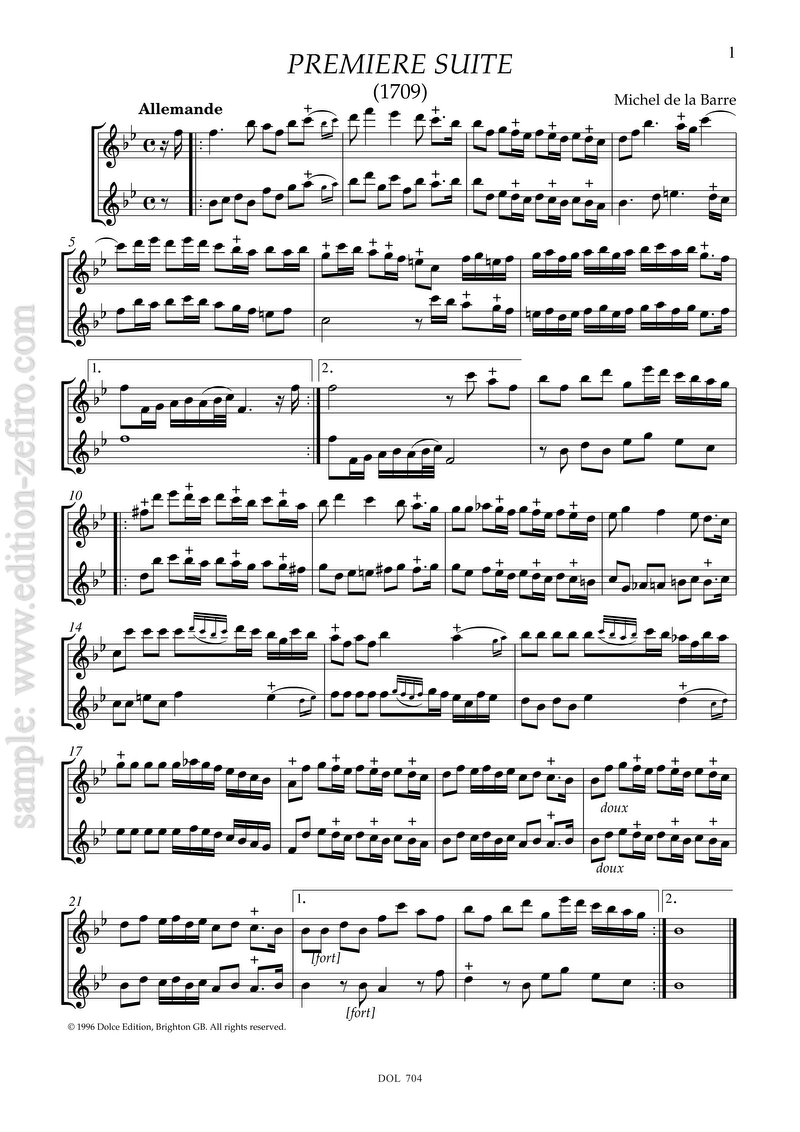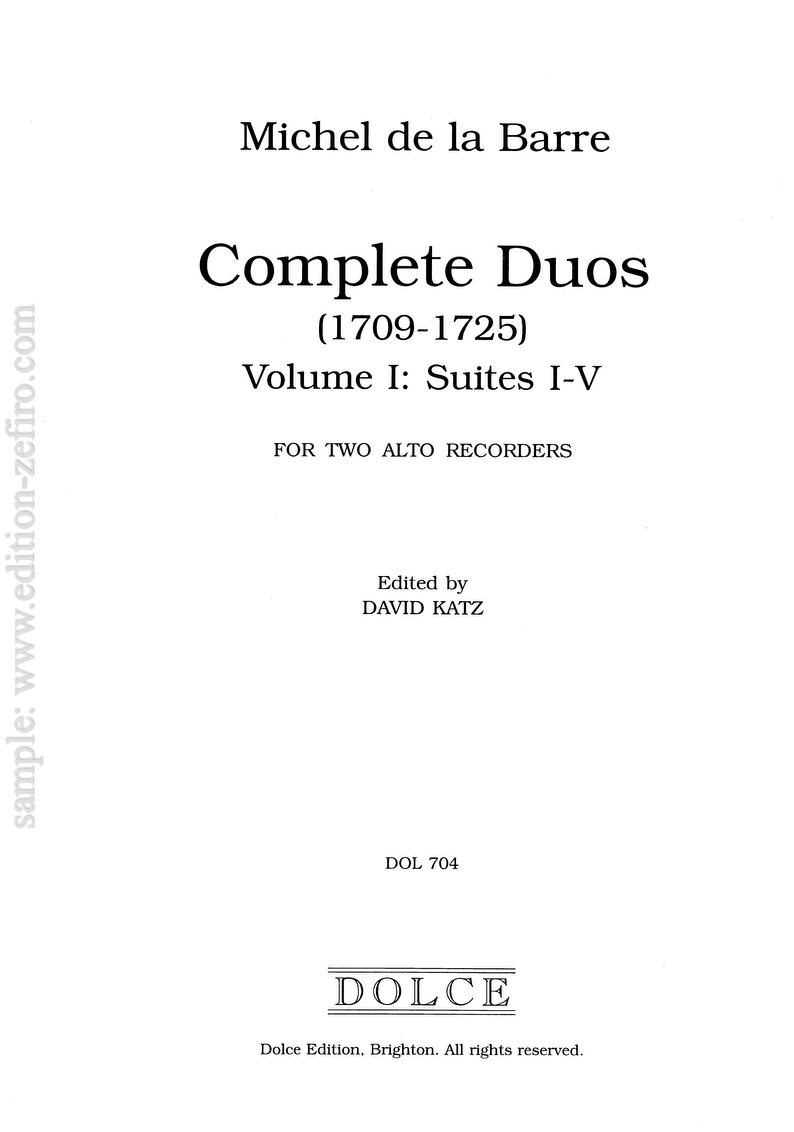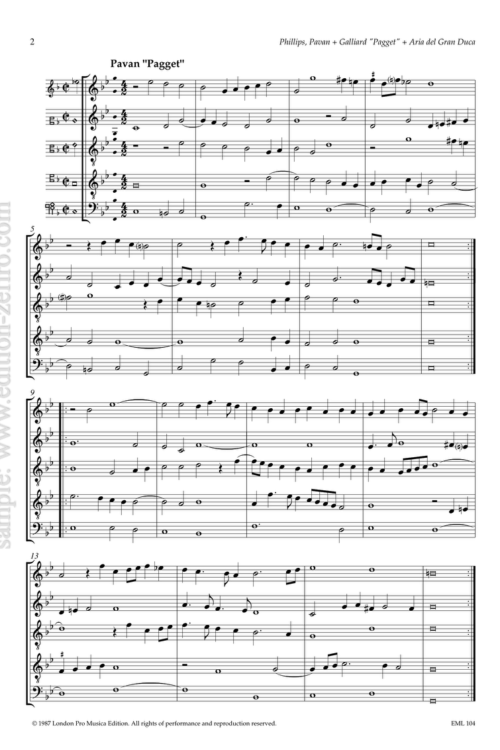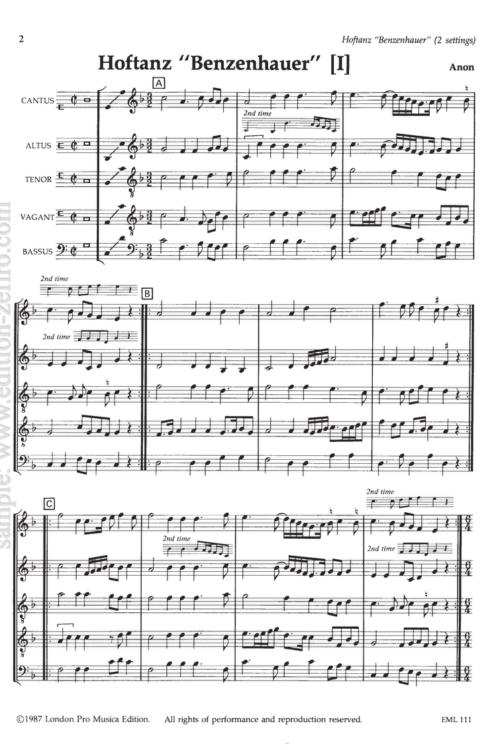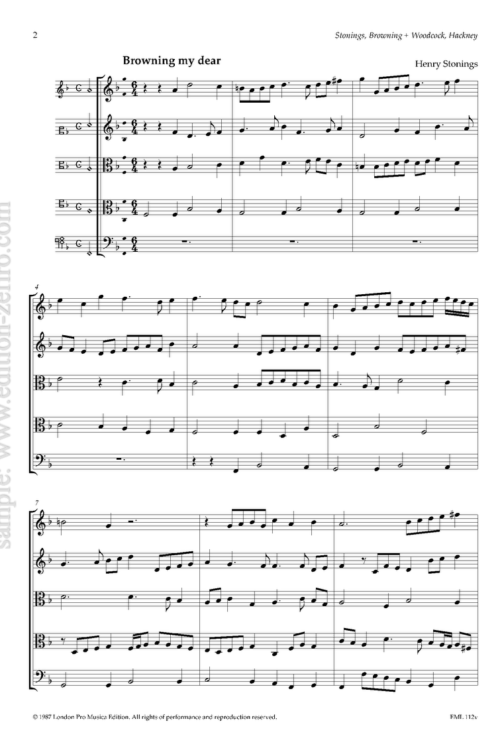Michel de la Barre was one of the leading French composers of flute music. He wrote 18 suites for two flutes.
His twelve books of duos a deux Flûtes Traversieres sans Basse, were published in Paris from 1709 to 1725. One book, the eighth, has not survived. Between them the remaining eleven books contain seventeen suites, though for some reason nos. 14 and 15 are called sonatas. The first three suites are double the length of the remainder, with eight rather than four movements.
In this edition the original markings (a cross) have been retained throughout: no editorial trills have been added, on the assumption that the performer will be awake enough to spot the inconsistencies. In general the original grouping of quavers (eighth notes) by beams (ligatures) has been retained, just in case this aspect of the notation may have some relevance to inègalité.
The first four suites have been transposed up a minor third for alto recorders in the usual way, but Suite V had to go up a fourth, to avoid some awkward fingerings.
(David Katz)
- Premiere Suite (1709)
- Allemande
- Fantaisie (I)
- Fantaisie (II)
- Fugue
- Rondeau
- Gigue
- Double de la Gigue
- Musette
- Deuxieme Suite (1710)
- Fantaisie: Vivement
- Allemande
- Allemande
- Contrefaiseurs
- Rondeau: Gracieusement
- Gavotte en Rondeau: Lentement
- Gigue
- Bourée en Rondeau: Vivement
- Troisieme Suite (1711)
- Prelude: Vivement
- Allemande
- Fantaisie: Gay
- Rondeau: Grave
- Allemande
- Rondeau: Gay
- Rondeau
- Gigue
- Quatrieme Suite (1711)
- Prelude: Gravement
- Allemande
- Rondeau: Grave
- Fugue
- Cinquieme Suite (1711)
- Prelude: Grave
- Allemande
- Sarabande
- Fugue


